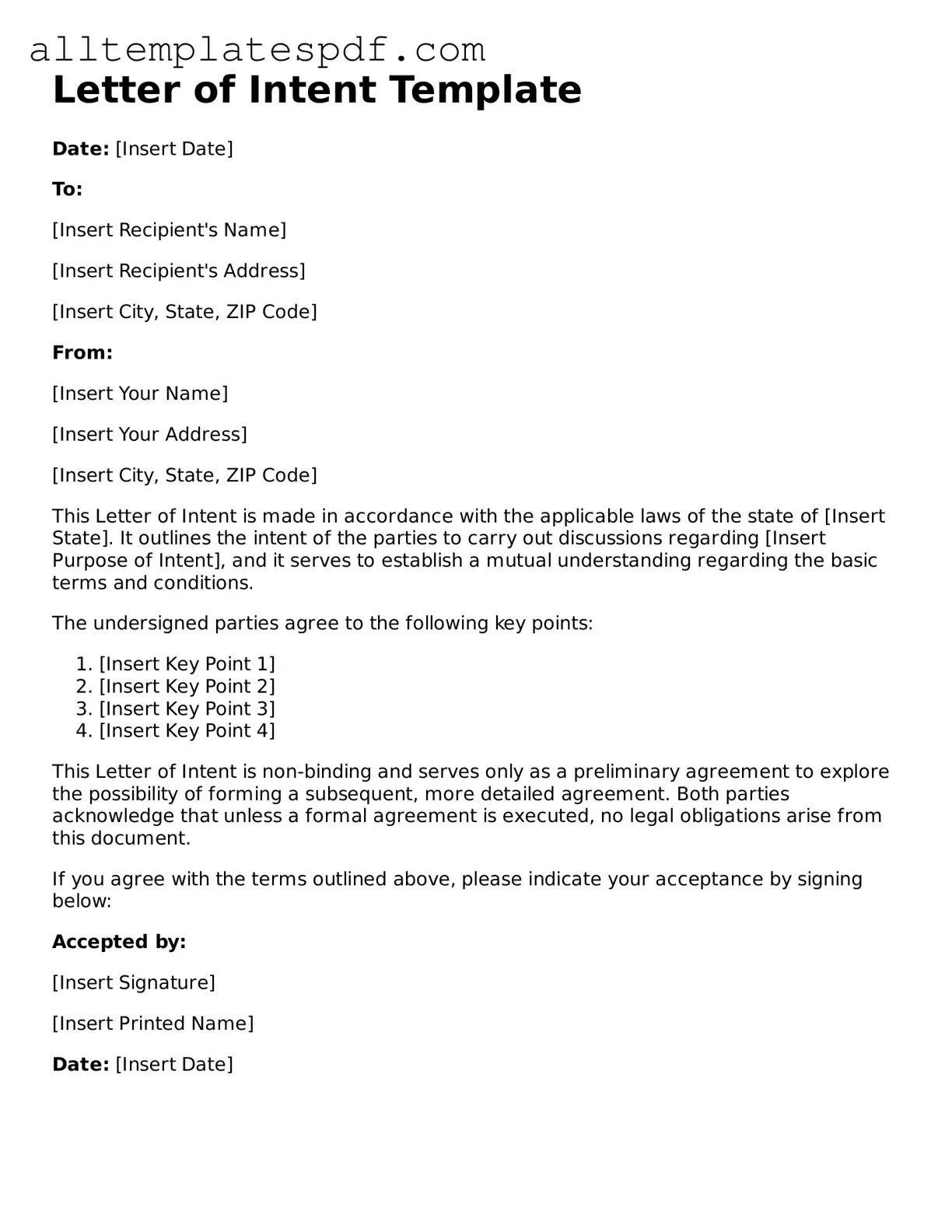Filling out a Letter of Intent (LOI) can be a straightforward process, but many individuals make common mistakes that can lead to confusion or miscommunication. One frequent error is failing to include all necessary details. An LOI should clearly outline the purpose, parties involved, and specific terms. Omitting any of this information can result in misunderstandings down the line.
Another mistake is using vague language. An LOI should be precise and clear. Phrases like "we will try to" or "we might consider" can create ambiguity. Instead, use definitive terms to convey intentions and commitments. This clarity helps all parties understand their obligations and expectations.
People often neglect to proofread their LOI. Spelling and grammatical errors can undermine the professionalism of the document. A simple typo can change the meaning of a sentence or create confusion. Always review the document carefully before submission.
Additionally, individuals sometimes forget to include a date. A date provides context for the agreement and can be crucial for timelines. Without a date, it may be unclear when the intentions expressed in the LOI are meant to take effect.
Another common error is failing to sign the document. An unsigned LOI may not hold any legal weight. Ensure that all parties involved sign the letter to validate the agreement and demonstrate commitment.
Some people make the mistake of not considering the audience. An LOI should be tailored to the specific recipient. Using overly technical language or jargon can alienate the reader. Instead, aim for a tone and style that is appropriate for the audience.
Moreover, individuals may overlook the importance of outlining next steps. An effective LOI should not only express intent but also suggest what actions will follow. This helps set expectations and keeps the process moving forward.
Lastly, many forget to keep a copy of the LOI for their records. Documentation is essential for future reference and can help resolve disputes if they arise. Always retain a signed copy for your files.
